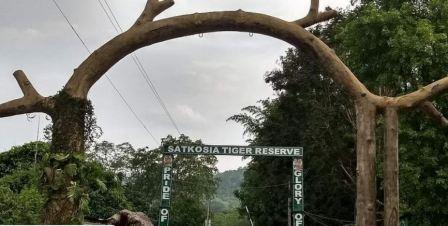New Delhi/ Bhubaneswar: Ten more Indian sites have entered the Ramsar list, taking the number of wetlands of international importance in the country to 64, the Union Environment Ministry said Wednesday.
The Ramsar list aims at “developing and maintaining an international network of wetlands, which are important for the conservation of global biological diversity and for sustaining human life, through the maintenance of their ecosystem components, processes and benefits”.
The 10 new sites — six in Tamil Nadu and one each in Goa, Karnataka, Madhya Pradesh and Odisha — cover an area of 12,50,361 hectares in the country.
The new Indian wetlands which have bagged the coveted tag are Koonthankulam Bird Sanctuary, Gulf of Mannar Marine Biosphere Reserve, Vembannur Wetland Complex, Vellode Bird Sanctuary, Vedanthangal Bird Sanctuary and Udhayamarthandapuram Bird Sanctuary in Tamil Nadu; Satkosia Gorge in Odisha; Nanda Lake in Goa; Ranganathittu Bird Sanctuary in Karnataka; and Sirpur Wetland in Madhya Pradesh.
“The designation of these sites would help in conservation and management of wetlands and wise use of their resources,” the environment ministry said in a statement. India is one of the contracting parties to the Ramsar Convention, signed in Ramsar, Iran, in 1971. New Delhi signed it on February 1, 1982.
India is aiming at getting a Ramsar tag for 75 of its wetlands on the 75th year of Independence, according to officials.
Koonthankulam Bird Sanctuary is a significant man-made wetland which covers an area of 72.04 hectares. It is situated in Nanguneri Taluk of Tirunelveli district of Tamil Nadu and is the largest reserve for breeding resident and migratory water birds in South India.
Satkosia spreads along the magnificent gorge over the river Mahanadi in Odisha. Established in 1976 as a wildlife sanctuary, Satkosia is the meeting point of two biogeographic regions of India: the Deccan Peninsula and the Eastern Ghats.
Nanda Lake is considered to be critically significant for its ecosystem services and biodiversity values for the local communities and society at large. A majority of the area is intermittent freshwater marshes that lie adjacent to one of the major rivulets of the Zuari River.
Gulf of Mannar Biosphere Reserve is located in the southeastern coastline and is a unique marine environment rich in biodiversity. This is the first Marine Biosphere Reserve in South and South-East Asia.
Ranganthittu bird sanctuary is located in the Mandya district of Karnataka. It has been enlisted as one of the Important Bird Areas in Karnataka and India by the Bombay Natural History Society.
Vembannur wetland in Tamil Nadu is a man-made inland tank which forms the southernmost tip of peninsular India. This wetland forms part of the Important Bird and Biodiversity Area and hence part of the BirdLife International Data Zone. About 250 species of birds have been recorded in the district.
Vellode Bird Sanctuary is located in the Vadamugam Vellode village in Tamil Nadu’s Erode District. Locally known as Periyakulam Yeri, it is one of the 141 prioritized wetlands in the state.
Sirpur wetland is a significant historical wetland in Indore which is only important for its aesthetic value but also provides immense ecological services.
Vedanthangal wetland is one of the oldest bird-protected areas in Chengalpattu District of Tamil Nadu. This freshwater wetland is a people-protected waterbird area, the history of which goes back to centuries where locals have been protecting this heronry and in return benefited from the manure-rich water from the lake.
Udhayamarthandapuram Bird Sanctuary is located in the TiruthuraipoondiTaluk of Tiruvarur district of Tamil Nadu. It is an important staging and breeding ground for several species of waterbirds.
PTI







































